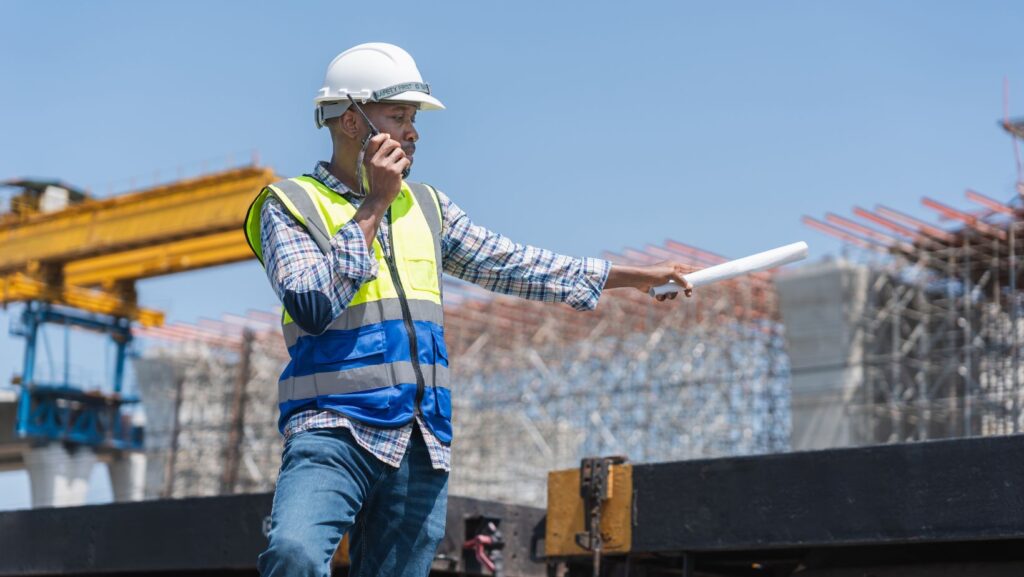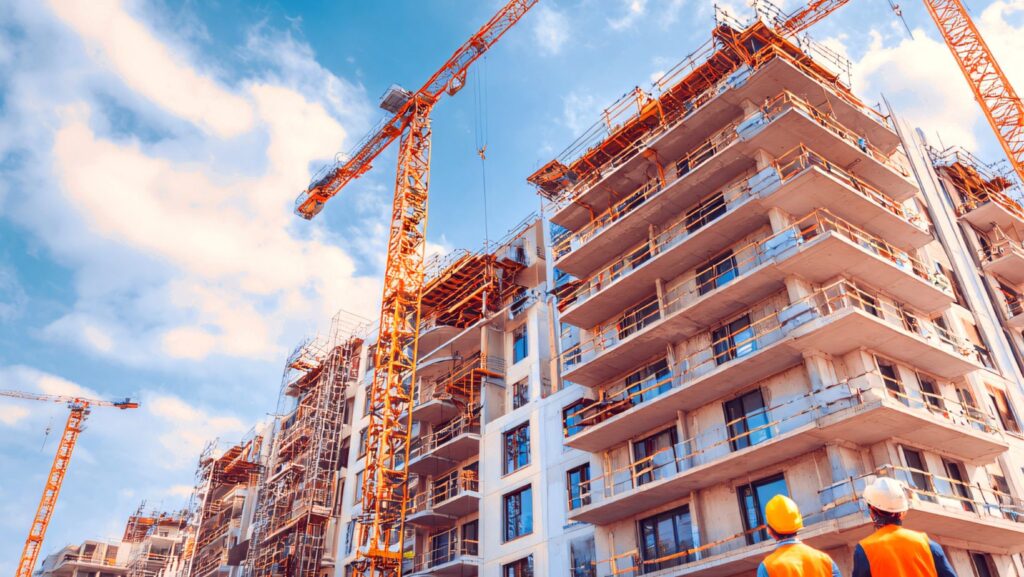Concrete barriers play an important role in keeping construction zones safe and organized. They create a solid boundary between work areas and traffic, which helps reduce the risk of accidents and property damage. They protect workers, guide vehicles, and support a smoother, safer workflow across different types of worksites.
Beyond safety, these barriers also improve efficiency. Their durable design allows them to handle heavy impact and harsh conditions without frequent replacement. As a result, they help maintain steady operations while reducing downtime caused by accidents or site disruptions.
- Physical Separation of Workers from Traffic to Prevent Accidents
Concrete barriers create a clear divide between active traffic and work areas. This physical separation prevents vehicles from entering zones where crews operate, which greatly reduces the chance of collisions. Many construction sites rely on concrete barriers for highway protection to keep both workers and drivers safe.
These barriers act as strong physical shields that absorb or redirect vehicle impact. As a result, they protect workers from sudden traffic movements and flying debris. Their use also helps drivers stay within proper lanes, lowering confusion in busy or changing road conditions.
Worksites that use concrete barriers often see fewer accidents and smoother traffic flow. They help maintain order by defining safe boundaries and guiding vehicles around construction zones. This structure not only protects people but also supports steady progress on highway projects without unnecessary delays.
- Impact Absorption to Reduce Injury Severity During Collisions
Concrete barriers play an important role in reducing the force of vehicle impacts. They absorb and spread out crash energy so that less force reaches the people inside the vehicle. This process helps lower the chance of serious injury.
Engineers design these barriers to deform slightly or redirect vehicles instead of stopping them suddenly. As a result, the energy from the crash dissipates more gradually, which reduces the strain on both vehicles and occupants.
In addition, barriers protect workers by stopping out-of-control vehicles from entering active work zones. Their ability to absorb impact energy keeps both drivers and on-site crews safer during collisions.
Research shows that materials with strong energy absorption properties can make a major difference in crash outcomes. Therefore, well-designed concrete barriers not only manage vehicle movement but also reduce the severity of injuries in high-impact situations.
- Traffic Redirection to Maintain Organized Worksite Flow
Concrete barriers help control how vehicles move near a worksite. They guide traffic into clear lanes and reduce confusion for drivers. This structure keeps cars away from active work areas, which lowers the chance of sudden lane changes or accidents.
Workers can complete tasks more safely because vehicles stay in predictable paths. The barriers also prevent unauthorized access to restricted zones. As a result, crews can focus on their work without constant traffic disruptions.
In addition, these barriers improve communication between drivers and worksite signals. Clear boundaries make it easier for drivers to follow detours or reduced-speed zones. This organized flow supports steady progress on the project and keeps both workers and motorists safe.
- Protection Against Debris and Hazardous Materials
Concrete barriers help block debris that may fall or fly from active work zones. They form a strong wall between workers and moving equipment, which reduces the chance of injury from loose materials. This protection also helps keep nearby walkways and roads clear of scattered debris.
Dust and small particles often spread across construction or demolition sites. Barriers limit this spread by containing materials within a defined area. As a result, workers and pedestrians face less exposure to harmful dust or fumes.
Concrete barriers also help control spills or leaks of hazardous substances. They can direct liquids away from drains and sensitive areas, which lowers the risk of contamination. This simple containment method supports safer cleanup and prevents environmental damage.
By separating work zones from public areas, concrete barriers help maintain cleaner, safer surroundings. Their solid structure gives crews time to respond to hazards before they spread beyond the site.
- Durable, Fire-resistant Construction for Long-term Safety
Concrete barriers give strong protection against fire because they use non-combustible materials. Their solid structure resists heat and does not add fuel to a fire. This feature helps keep worksites safer and reduces the risk of damage to nearby equipment or materials.
Fire-resistant concrete also supports long-term durability. It maintains its shape and strength even after exposure to high temperatures. As a result, crews can depend on it to perform well in demanding conditions without frequent replacement or repair.

Builders often use reinforced masonry or precast concrete planks to meet fire safety standards. These materials pass strict tests that measure how long they can resist fire spread. Therefore, they help protect workers and property for years while keeping maintenance costs low.
Concrete’s natural resistance to fire, moisture, and impact makes it a dependable choice for permanent barriers. It provides both structural stability and consistent safety across a wide range of worksites.
Conclusion
Concrete barriers serve as an effective line of defense on worksites. They separate traffic from active work areas, which reduces the chance of vehicle-related accidents and injuries. Their solid structure also helps control movement within the site and supports safer operations.
These barriers provide more than physical safety. They also improve efficiency by guiding vehicles, defining zones, and supporting organized workflows. As a result, workers can focus on their tasks with fewer disruptions.
Their durability, fire resistance, and low maintenance needs make them a long-term safety investment. In short, concrete barriers protect people, equipment, and property while helping worksites operate smoothly and safely.
